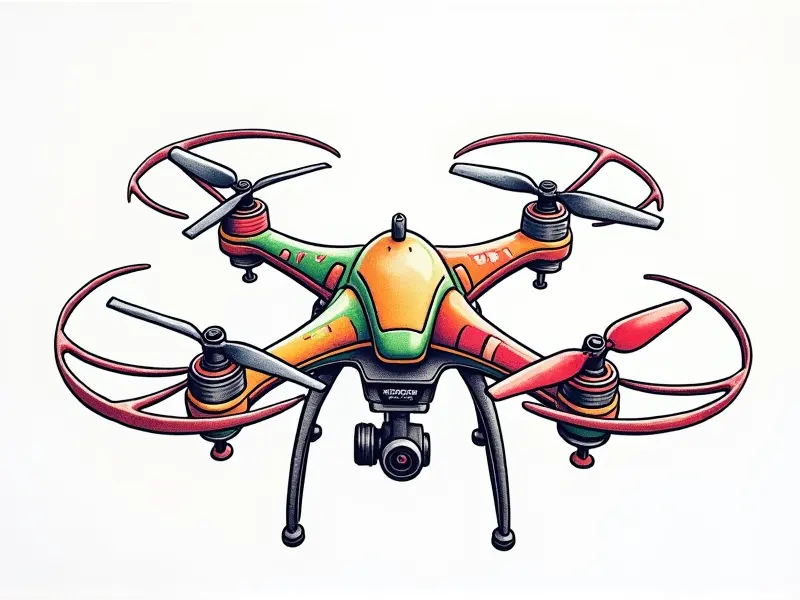RC airplane crash recovery

How to Recover from RC Airplane Crashes
Crashing your remote control (RC) airplane can be disheartening, but it's a common experience for both beginners and seasoned pilots. The key is knowing how to recover quickly and effectively so you can get back in the air as soon as possible.
Fixing Your RC Plane After a Crash
After a crash, your first step should be assessing the damage. Start by checking for any visible cracks or broken parts. Common areas of damage include the wings, fuselage, and landing gear. Once you've identified the issues, gather the necessary tools and materials to begin repairs.
Post-Crash Recovery Tips for RC Planes
- Inspect Thoroughly: Look for any hidden damage that might not be immediately apparent.
- Document Damage: Take photos or make notes of the extent and location of the damage before you start repairs.
- Use Quality Replacement Parts: Invest in high-quality replacement parts to ensure your RC plane remains durable and reliable.
Revive Your RC Plane Post-Crash Easily
Recovering from a crash can be simplified with the right approach. Here are some steps to help you revive your RC plane quickly:
- Disassemble Carefully: Take apart the damaged sections of your plane to access internal components.
- Clean and Lubricate: Clean all parts thoroughly and apply lubrication where necessary, especially on moving parts like servos and control horns.
- Reassemble with Precision: Reattach the repaired or replaced parts carefully to ensure a secure fit.
Quick Fixes for RC Airplane Crashes
Sometimes, quick fixes can get your plane back in the air without extensive repairs. Here are some common issues and their solutions:
- Broken Wing Spars: Use epoxy or carbon fiber tape to reinforce broken spars.
- Dented Fuselage: Sand down dents and apply filler, then sand again for a smooth finish.
- Cracked Control Surfaces: Replace cracked control surfaces with new ones if they cannot be repaired.
Surviving an RC Airplane Crash
To minimize damage during crashes and ensure quicker recovery, follow these tips:
- Practice Soft Landings: Learn to land gently to reduce the impact of a crash.
- Use Protective Coatings: Apply protective coatings or armor plating to vulnerable areas like wings and fuselage.
- Carry Spare Parts: Always carry spare parts in your field kit for quick repairs on-site.
From Crash to Flight: Repairing RC Airplanes
The process of repairing an RC plane after a crash involves several stages, from initial assessment to final flight testing. Here’s how you can navigate this process:
- Initial Assessment: Identify all damaged components and assess their repairability.
- Repair or Replace: Choose between repairing existing parts or replacing them with new ones based on the extent of damage.
- Flight Testing: Conduct thorough flight tests to ensure your plane is ready for another mission.
Rescue and Restore: RC Plane Damage Fixes
Restoring an RC plane after a crash requires patience, skill, and the right tools. Here’s how you can rescue and restore your aircraft:
- Assess Structural Integrity: Check for any structural weaknesses that could lead to future crashes.
- Repair or Replace Components: Focus on repairing or replacing damaged components like servos, ESCs, and batteries.
- Test Thoroughly: Perform multiple test flights to ensure your plane is stable and responsive before full operation.
Bounce Back from an RC Airplane Crash
Crashes can be discouraging, but they also provide valuable learning opportunities. Here’s how you can bounce back after a crash:
- Analyze the Cause: Determine what led to the crash and take steps to prevent similar incidents in the future.
- Maintain Regular Maintenance: Keep your RC plane well-maintained through regular checks and servicing.
- Stay Positive: Maintain a positive attitude and view each crash as an opportunity for improvement.
Maximizing Your RC Plane's Lifespan Post-Crash
To extend the lifespan of your RC plane after a crash, follow these tips:
- Use High-Quality Materials: Opt for durable materials that can withstand crashes and wear.
- Lubricate Regularly: Keep moving parts well-lubricated to prevent premature wear and tear.
- Store Properly: Store your RC plane in a dry, dust-free environment when not in use.
DIY RC Airplane Crash Repair Guide
If you're looking for a comprehensive guide to repairing your RC plane after a crash, here’s what you need to know:
- Gather Tools and Materials: Ensure you have all necessary tools like epoxy glue, sandpaper, replacement parts, etc.
- Follow Repair Instructions: Refer to the manufacturer's repair manual or online guides for detailed instructions.
- Practice Patience: Take your time during repairs to ensure a high-quality outcome.
Conclusion
Crashing an RC plane is never fun, but with the right approach and tools, you can recover quickly and get back in the air. By following these tips and guides, you'll be able to minimize downtime and extend your RC plane's lifespan. Remember, every crash offers a chance for improvement and learning, so stay positive and keep flying!

